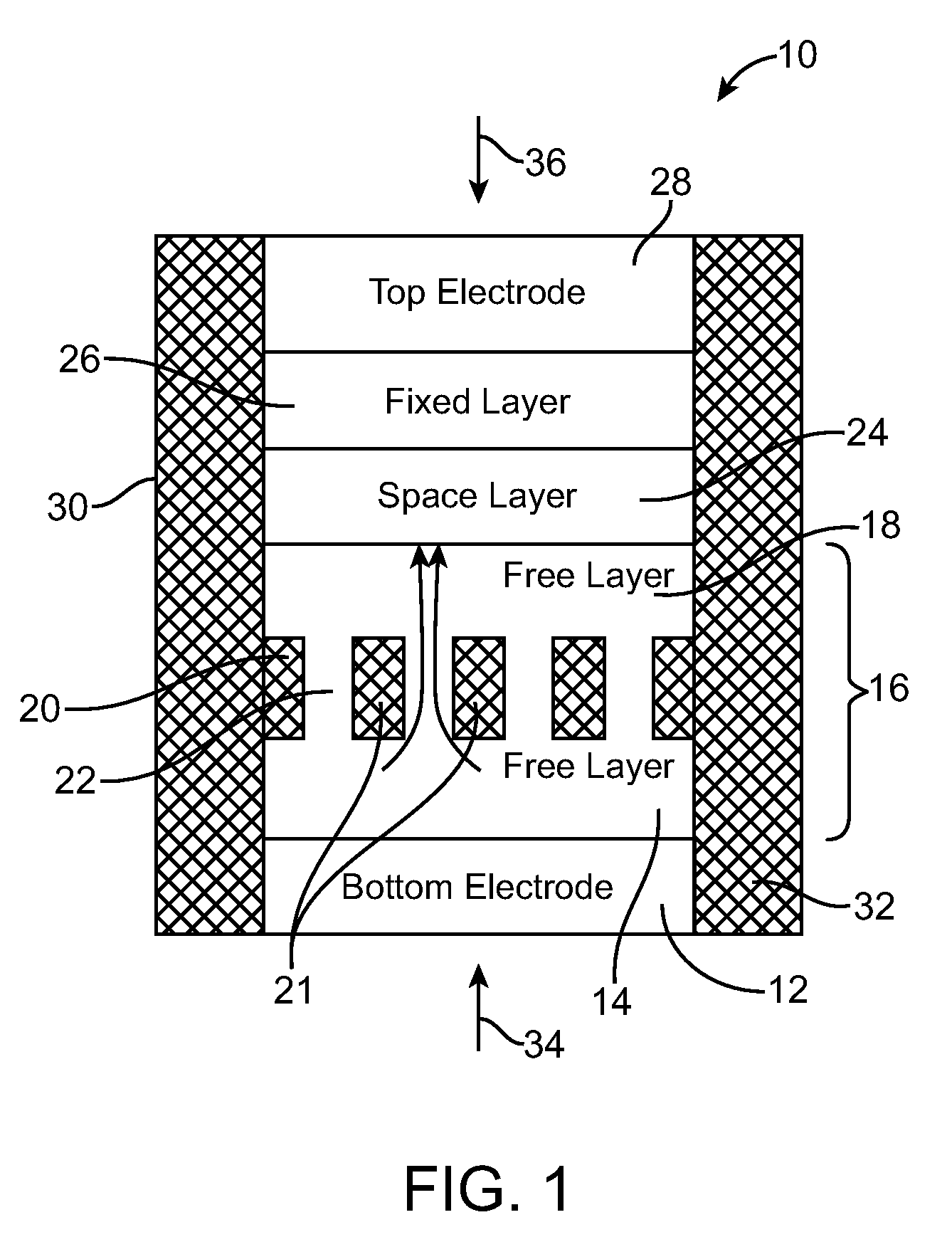Current-confined effect of magnetic nano-current-channel (NCC) for magnetic random access memory (MRAM)
a magnetic nano-current channel and random access memory technology, applied in the field of magnetic random access memory (mram), can solve the problems of large physical size, high power dissipation, and access latency
- Summary
- Abstract
- Description
- Claims
- Application Information
AI Technical Summary
Benefits of technology
Problems solved by technology
Method used
Image
Examples
Embodiment Construction
[0028]In the following description of the embodiments, reference is made to the accompanying drawings that form a part hereof, and in which is shown by way of illustration of the specific embodiments in which the invention may be practiced. It is to be understood that other embodiments may be utilized because structural changes may be made without departing from the scope of the present invention.
[0029]In an embodiment of the present invention, a Magnetic Random Access Memory (MRAM) element of a spin current driven type of switching (or spin torque transfer effect) with a relatively low switching current density includes a composite (or hybrid) free layer, included in the layers of MRAM element. The composite free layer has a nanocurrent-channel (NCC) layer sandwiched by two free sub-layers and having a fixed layer, wherein both the free layer separated from the composite free layer by a spacer layer, the fixed layer and the composite free layer have a perpendicular magnocrystalline...
PUM
 Login to View More
Login to View More Abstract
Description
Claims
Application Information
 Login to View More
Login to View More - R&D
- Intellectual Property
- Life Sciences
- Materials
- Tech Scout
- Unparalleled Data Quality
- Higher Quality Content
- 60% Fewer Hallucinations
Browse by: Latest US Patents, China's latest patents, Technical Efficacy Thesaurus, Application Domain, Technology Topic, Popular Technical Reports.
© 2025 PatSnap. All rights reserved.Legal|Privacy policy|Modern Slavery Act Transparency Statement|Sitemap|About US| Contact US: help@patsnap.com



